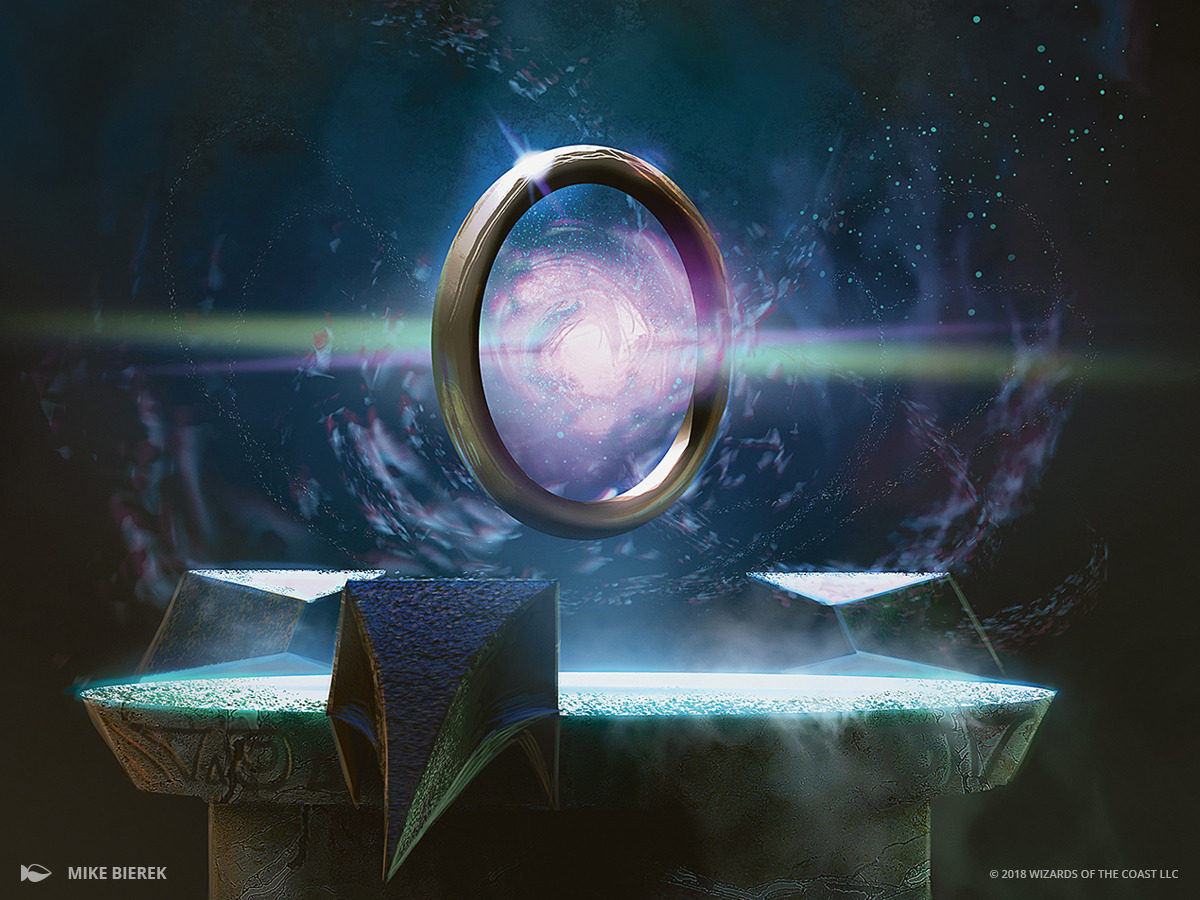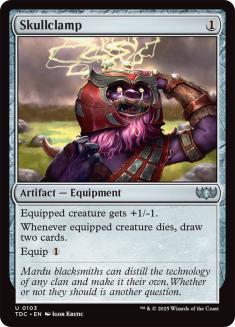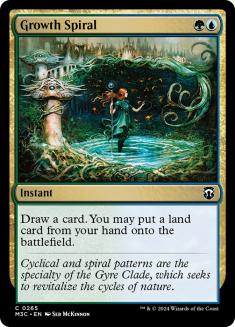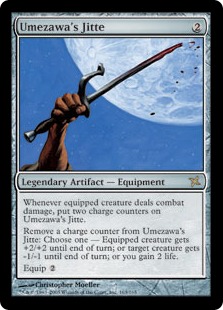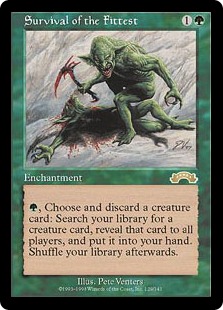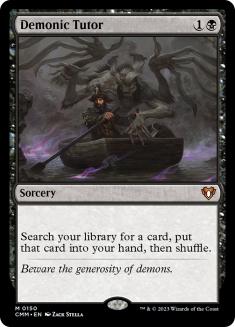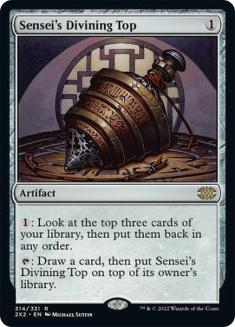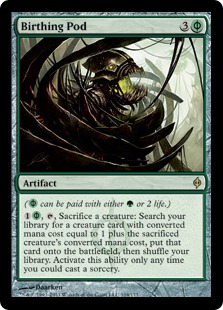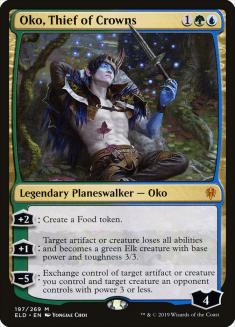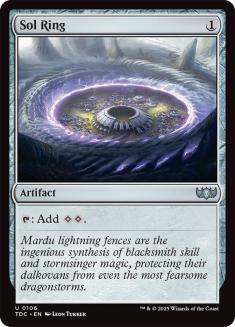The recent somewhat jarring swath of bannings in other formats, especially Standard, served by comparison to shine a light on the Commander Banned Llist. That light is positive, as Commander has become the format of stability. We still update the Banned List only quarterly (or, as we did earlier this year for the first time ever, out of cycle only in extreme circumstances). Without a tournament scene to cater to or consider, we can take things very slowly. Short-term course corrections are unnecessary, and to some extent would be more damaging in the long run.
This relatively conservative pace of change is intentional. Messaging becomes easier and players aren’t inundated with the constant anxiety of wondering if their favorite cards are going to get the axe. The Commander Rules Committee (RC) has the luxury of taking our time in evaluating cards and their impacts. As a philosophical matter of course, we’d rather wait and get it right than rush in and then later have to undo anything.
We shape the Banned List differently than other formats do. Right in the Philosophy Document, we mention that competitive balance isn’t a consideration. We instead look to broadly sculpt a style of game focusing on the experiences of everyone involved. We take action on the worst offenders; there are plenty of other cards that might also fit the bill in creating the kinds of games we’d prefer to not promoted, but also want to consider keeping the Banned List as tight as possible.
It also helps that there’s no such thing as a global metagame to consider. There isn’t a single, worldwide Commander environment. We can then additionally use the list as exemplars for the kinds of cards you might additionally restrict yourself or your groups from playing. Using Banned List cards as exemplars isn’t the primary reason they’re on the list in the first place, but it’s a nice secondary benefit.
The way we manage the format is unlike the way other formats are handled, which doesn’t make sense to some people. To those folks, we’ll tell you that we understand where you’re coming from while maintaining that we believe it’s best for Commander and the broadest part of its fan base that we do it differently. The format’s popularity is a testament to the success of sticking to the original vision for Commander to be something different, to be a respite from tournament Magic. If you understand that we want to be not-tournament-Magic, I hope it’s easier to understand why we wouldn’t manage it the way tournament formats are.
The way we manage the list leads to different card evaluations, since we’re banning them for reasons other than those a tournament format would use to ban them (again pointing to the lack of a global environment). This leads to our lists looking quite different. Up until recently, we started with Vintage-restricted cards and then banned some on top of that. While it was a helpful shorthand in the early days of the format, tying ourselves to Vintage wasn’t a philosophical underpinning, merely a convenience. It became clear that uncoupling made a great deal of sense. You’ll still see a great deal of overlap. As a matter of common sense, we also ban the same Conspiracy, ante, and culturally offensive cards that are banned in all formats. Outside of those, we have 44 cards banned in Commander (compared to 58 in Legacy). There are some striking differences.
I’d like to focus on the Top 10 cards that you can still play in Commander but are banned in another format. For the purposes of this discussion, we won’t consider Pauper or Block, those being somewhat niche formats, but stick to the bigger ones: Standard, Modern, Legacy, Pioneer, and Brawl. What gets an individual card on this list might be different from what gets another card there. Some will be because they create interesting gameplay; some will be because they don’t cause the problems in Commander that they do because of the nature of the other format.
Honorable Mentions
First Honorable Mention goes to the allied-color fetchlands: Bloodstained Mire, Flooded Strand, Polluted Delta, Windswept Heath, and Wooded Foothills. Banned in Pioneer, they remain mainstays in Commander due to their ability to smooth out manabases, especially in three-, four-, and five-color decks, which often really need the help. While some folks consider them a necessity, I think that’s only if you’re playing in a high-powered environment that wants to end the game as quickly as possible. In games for the core demographic, they’re a nicety, perhaps even a luxury, but hardly a prerequisite. Yes, they’re strictly better than other land searchers, like Terramorphic Expanse or Evolving Wilds, but I think many players overestimate how much better they are. I find the advantage slice to be far thinner than most people think it is.
Second Honorable Mention goes to Drannith Magistrate. The reason that it’s here instead of on the Top 10 list is that it bears some ongoing scrutiny, being a relatively new card. At the moment, it’s not anywhere close to being on the chopping block, but if such a thing as the Watch List existed, it might be on it. It’s generated some online talk, and it definitely puts a crimp in a number of strategies. The saving grace is that it’s relatively easy to deal with, the way most creatures are. We certainly haven’t seen the kind of ubiquity that would warrant stronger consideration.
Third Honorable Mention goes to Wilderness Reclamation, one of the recently banned cards in Standard. While it can be strong in two-player formats, it loses much of its lustre in multiplayer. Sure, you get an effective extra turn for the next player’s, but that’s where it ends—unlike Seedborn Muse, which repeats on each other player’s turn.
10. Skullclamp
Banned in: Legacy.
Skullclamp is a value card in Commander. The value can get pretty extreme, but there’s no world in which it’s broken or format-warping. It will necessarily and justifiably eat artifact removal at the first available opportunity. When you blow it up and the player complains, you can point out two things. First, it’s on the You Can’t Get Angry List. Second, when they say, “Oh, come on, I just wanted to draw some cards,” you know they’re fibbing.
Skullclamp gets some extra notice because of the change to the rule regarding commanders dying. Unlike in previous times, Clamping up your commander will get you those two cards when someone nukes it, since it hits the graveyard before you move it (if you want) to the command zone. The +1 to power doesn’t hurt, either.
9. Lurrus of the Dream-Den
Banned in: Vintage and Legacy.
The card banning that hastened decoupling from Vintage, Lurrus is a fun but inoffensive card in Commander. It can be a nice leader for a compelling deck, like when I recently featured Logan Isch’s Tribute to Cici deck. Even before the nerfing of the companion mechanic, its condition wasn’t right for the format, which tends to feature spells with big mana costs, not small ones. I’m happy to run it as 1 of 99, although I’ve yet to find a home for it. I’m considering retooling one or both of my alternate Karador, Ghost Chieftain decks, so it’ll likely occupy a spot in one of them.
8. Growth Spiral
Banned in: Standard.
Growth Spiral just seemed like an alternate take on Explore, which I pointed out in my Ravnica Allegiance set review. It’s slightly better in that it’s an instant, so you can really mess with someone’s combat math, but it’s more limited in that you also need blue mana (and it’s restricted to Simic or Simic-adjacent decks). Otherwise, I treat it as ramp that’s still valuable in the late-game because of the card draw. It’s safe enough for the format that it was reprinted in Commander 2020, although I’m slightly concerned that it’s the kind of card people will consider an auto-include. Homogenization is not the format’s friend.
7. Umezawa’s Jitte
Banned in: Modern.
Jitte is just a weird card. It’s an Equipment that puts counters on itself instead of the equipped creature. You can activate it when it’s not equipped, since it holds the counters. I tried searching for other similar Equipment, but came up empty; most other ones (made more recently, in the era of more involved design and development) give the abilities to the creature. I suppose Batterskull’s ability to return itself to your hand counts, as do Tatsumasa, the Dragon’s Fang and Haunted Plate Mail — but you get the point. All that said, Jitte a really strong card. It’s ridiculously cheap to cast and to equip for the power it brings. The raw flexibility is its real strength; you have options whenever you need them.
6. Survival of the Fittest
Banned in: Legacy.
One of the great value cards of all time, Survival of the Fittest can be used for nefarious means or just doing cool stuff. In the few high-powered lists it finds itself in, you use it to go find your combo pieces, at least those which are creatures. That’s a fair amount of Thassa’s Oracle and Protean Hulk, although Dockside Extortionist, Gilded Drake, and Notion Thief are popular choices as well. In regular games, the sky is the limit, as many players use it to answer the battlefield state’s current threat(s). Personally, I’m a fan of discarding Big Game Hunter to Survival in order to go get something spicy as well as being able to cast BGH for its madness cost.
5. Demonic Tutor
Banned in: Legacy.
When I mentioned to my fellow RC members and the folks on the Commander Advisory Group (CAG) I was putting together this list, Demonic Tutor came up in quite a few responses. Even though I’m not the biggest fan of tutors (they mess with the variance of the singleton nature, which is a big draw for me personally), Demonic Tutor is a representative card in the format. It’s one of the cards that will draw people in when the realize that they can play it. Like many other cards, how it gets used will depend where you sit on the power level fence. I’ve certainly used it on Turn 2 to go get a land, and I know I’m not the only one.
4. Sensei’s Divining Top
Banned in: Legacy and Modern.
Sensei’s Divining Top can be a miserable card because it can really slow down a game. Fortunately, a decade of encouragement and positive reinforcement has led Commander players to Top in a fashion that doesn’t slow down the game. The way we’ve played it for a long time and I’m constantly sharing with people is that you Top on the turn of the player to your left right after you pass. You then reserve the right to change how you arranged the cards if the battlefield state changes (or you just want to, since you went to the effort of saving time).
This doesn’t work for highly competitive environments, because Topping correctly and at the right time (which is almost always end of turn of the player on your right, unless you’re digging for answers) is one of the skill-testers. In the end, the Commander player base has risen to the challenge and made Top a not-miserable choice.
3. Birthing Pod
Banned in: Modern.
There’s no end to the fun and value of Birthing Pod (and its not-banned friend, Prime Speaker Vannifar ). Like with Sensei’s Divining Top, most Commander players fortunately know what they’re doing with Birthing Pod in their hands, meaning they have an idea what they’re searching for instead of wondering what might be good in their deck. Because I play it in multiple decks, I keep a deck list handy when I’m playing Pod just so that I don’t waste other players’ time. There’s often a clear answer—like Wood Elves into Solemn Simulacrum—but one of the things I love about Birthing Pod is that it lets you play very toolbox-ish decks. Sometimes, you just have to go for the big splashes, like sacrificing Kokusho, the Evening Star to fetch up Protean Hulk.
2. Oko, Thief of Crowns
Banned in: Standard, Modern, Pioneer, and Brawl (and Historic).
Oh, Oko, this world was never meant for one as beautiful as you. Unless it’s the world of Commander, and you’re welcome here. A whale elsewhere, Oko is just another good-looking fish in the vast ocean of the format. It certainly has value, especially in turning off problematic commanders by turning them into Elk, but that only goes so far. Sacrifice outlets and battlefield sweepers are so common that those commanders quickly become venison anyway.
If you’re exchanging control of things in Commander, you probably don’t want to limit yourself to creatures with power three or less, with some obvious exceptions ( Kinnan, Bonder Prodigy and Azami, Lady of Scrolls come to mind; there are certainly more). We’re happy for Oko to have a home here, especially for all the folks who picked up the card for playing elsewhere.
1. Sol Ring
Banned in: Legacy.
If there’s a flagship card of Commander, it’s Sol Ring. While its presence can sometimes be divisive and polarizing, it’s also undeniable. Whether or not you consider it a dangerous card or shrug-worthy, Sol Ring from the earliest days has carried the format’s torch even before it was included in the first (and subsequent) preconstructed decks. There is very little to say about Sol Ring that has not already been said time and time again. Agree with the decision or don’t as you see fit; Sol Ring isn’t going anywhere anytime soon.
Commander is a format unlike any other, intentionally and institutionally so. By extension, its Banned List will have many elements that diverge from traditional lists. We’re happy that the format is large enough, in many meanings of the word, to be able to accommodate cards that would break things elsewhere, giving players a chance to run with cards that they might otherwise miss.
Visit my Decklist Database to see my Signature Decks, the Chromatic Project, and more!

